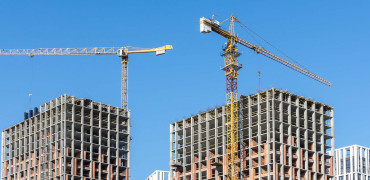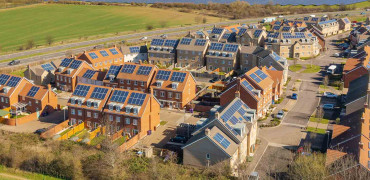The industry consultation on the 2025 Future Homes Standard (FHS) was issued in December last year, to cries of ‘missed opportunity’ from many in the industry, due to its relatively less demanding energy efficiency targets than some had been expecting.
For example, the U-values in the two ‘notional dwellings’ that will be used to measure buildings’ energy use in the standard for English new build homes are based on the same fabric standards as Part 2021, and further ‘metrics’ from the Part L such as the Fabric Energy Efficiency Standard will be unchanged.
UKGBC (the UK Green Building Council) bemoaned the fact that the consultation opted for “a choice between the two weakest options set out by the Future Homes Hub ‘Ready for Zero’ report.” It added - “neither can be considered genuinely ‘future’ as many buildings in the UK are already built to a higher standard.”
More significantly, UKGBC wants ‘in-use’ energy performance figures to be the basis of compliance
Finishing the job
The body believes that a ‘further standard’ will have to be introduced “shortly after the FHS, to finish the job.”
They propose including U-values and air tightness levels which match the Climate Change Committee’s recommendations to limit heat demand to 15-20kwh/m2/year, and also that a truly ‘future’ standard should make solar PV mandatory, include MVHR, and include regulation on whole life and embodied carbon assessments.
And perhaps more significantly, UKGBC wants ‘in-use’ energy performance figures to be the basis of compliance.
However, others have stated that far from being too weak, the Future Homes Standard includes a major issue for future designs, namely the replacement for SAP (the current method for calculating energy efficiency), which is called the Home Energy Model (HEM).
HEM – a ‘modular’ open-source cloud-based standard designed to be more responsive to industry innovation, will be the means of complying with FHS.
But it has caused consternation for some due to assumptions being made within the proposed standard on estimated energy consumption.
Hot water demand
I recently met wastewater heat recovery specialists ShowerSave (now part of Keystone Group), and they have concerns around the assumptions within the HEM modelling of hot water demand within an average home, believing it to be a significant underestimate.
They said it was “half” of the demand, which was in SAP previously, and based on combi boiler data which “doesn’t say where the water was coming from,” i.e. did not specify whether any additional renewable heat recovery was being factored in.
The Chartered Institute of Environmental Health (CIEH), which has a particular focus on social housing and the private rented sector, commented in its response to the FHS consultation that the current proposals contained “misleading” underestimates on hot water use:
“The Home Energy Model is based on occupancy of a five-bed property set at 3.9 people, whereas in the private rented sector there would (for commercial reasons) be a minimum of five people. This entirely skews all the modelling, particularly under-estimating space heating and hot water demand.”
If this is not addressed, there is the risk of drastically undersizing, or underspecifying, hot water provision for many homes, which could result in many thousands of snagging issues which will further hamper our ambitions to reach Labour’s 1.5 million homes.
As the CIEH points out, simply calculating an EPC based on occupancy when the building happens to be assessed is not a failsafe way of specifying for correct occupancy levels.
Still lot’s to do
So there seems to be a lot to do on the Future Homes Standard, and time is short. Currently it seems to be a case of ‘too little’ on one hand, and ‘too many wrong assumptions’ on the other.
The consultation ended in March 2024 and of course we have had a change of Government.
Now we are expecting the final ‘standard’ to be published at some point this year, which is kind of a ‘must’ given it’s expected to be mandatory in 2025.
The PR has all been that dwellings will have to ‘reduce emissions by 75%-80%’ but will this actually be the result, given that the consultation proposes scant changes in terms of fabric compared with Part L 2021?
The question is how much has the new Department of Housing listened to the consultation responses and taken their recommendations on board.
And what will the accompanying guidance be like; will it be prescriptive, and are they as open minded on changes to the standard as the ‘open source’ methodology behind the Home Energy Model?
James Parker is editor of Housebuilder and Developer magazine




